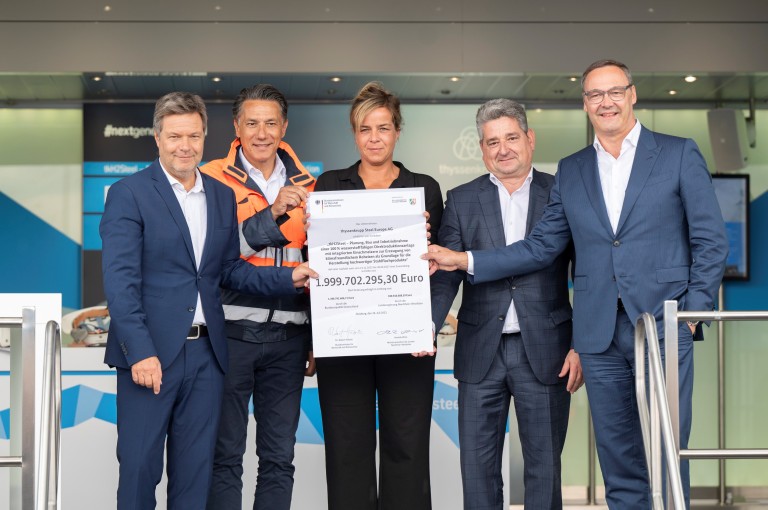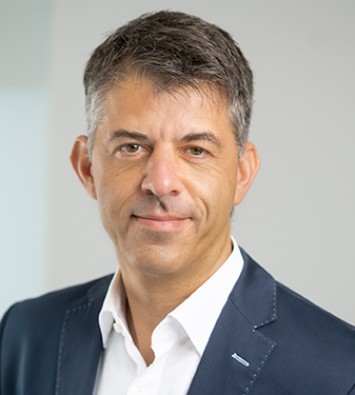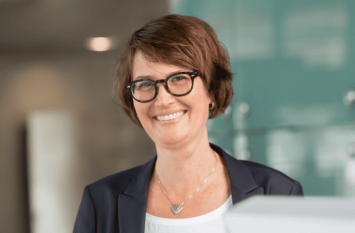bluemint® Steel
tkH2Steel®: With hydrogen to carbon-neutral steel production
The lights are set to green for the future of steel in North Rhine-Westphalia, Germany and Europe: thanks to funding from the federal and state governments for thyssenkrupp Steel's tkH2Steel® project at the Duisburg site, a pioneering transformation is becoming reality: the production of premium steel with green electricity and hydrogen in the direct reduction plant – and no longer in the coal-fired blast furnace. This is a major breakthrough for climate change mitigation, for our company and the workforce, as well as for the entire region and the supporters of the project in federal and state politics.
One of the largest CO2 emitters, which still accounts for 2.5 percent of emissions in Germany, is becoming a pioneer of sustainable value creation in Europe. Electric mobility, the energy turnaround, the mobility revolution, the packaging industry and many other sectors – they all need steel as a basic material not only in the highest quality, but also with the smallest possible carbon footprint.
This is exactly what thyssenkrupp Steel will be supplying within just a few years, with a technologically unique plant configuration: tkH2Steel®. Each ton of green hydrogen will then save 28 tons of CO2. However, we do not skimp on quality: thyssenkrupp Steel will continue to be able to offer all proven grades without restrictions, for example our electrical steel for the energy and mobility revolution.
The innovative heart of the turnaround in steelmaking is the combination of a hydrogen-powered direct reduction plant with two electric melters. The next generation of steel will become a reality with the commissioning of the direct reduction plant from 2027 onward, followed by the next steps towards climate neutrality by 2045 at the latest. The generation change will be carried out by thyssenkrupp Steel during ongoing steelmaking operations and at the existing Duisburg site.
In this way, we are strengthening Germany as an industrial location and securing attractive jobs in the region – 26,000 directly in the company and 150,000 in downstream industries in North Rhine-Westphalia. Nationwide, as many as four million jobs need to be preserved in steel-intensive industries. Decarbonized steel is the foundation of industrial value creation that secures growth and jobs. In this way, CO2-reduced steel reconciles climate change mitigation, prosperity and economic resilience.
As a major consumer of green electricity and hydrogen, thyssenkrupp Steel is also a pioneer of the green energy infrastructure of the future. Alone the first direct reduction plant, with its capacity of 2.5 million metric tons of direct reduced iron (DRI), will need almost 400 metric tons of hydrogen every day – equivalent to filling the gasometer in Oberhausen full to the brim twelve times over.
The hydrogen and green electricity ramp-up is linked to the expectation of further industrial jobs beyond steel with a secure future. A perspective that underlines the importance of the project and for which thyssenkrupp Steel accepts responsibility. The #nextgenerationsteel has its home on the Rhine and Ruhr rivers, but it thinks and acts as part of Europe.


The direct reduction plant is a shaft furnace that operates on natural gas or hydrogen, and therefore does not require coal. At about 1,000 degrees Celsius, oxygen is removed from the iron ore, and direct reduced sponge iron (DRI) is produced. While still hot, the DRI is further processed into liquid hot metal in electrical power-operated melters. Positioning the two melters immediately adjacent to the direct reduction plant allows the solid input stock produced there to be converted into molten hot metal immediately; this makes the entire process particularly efficient. The plant with the two melters will be optimally integrated into the surrounding steelworks infrastructure.
With the first direct reduction plant alone, we can save up to 3.5 million metric tons of CO2 in pure hydrogen operation. This corresponds to just under 5% of emissions in the Ruhr region, or around 2% of emissions in North Rhine-Westphalia. When the plant is scheduled to go into operation in 2027, green hydrogen will not yet be available in sufficient quantities. It is therefore all the more important that the direct reduction plant can also be commissioned with natural gas, enabling the use of blue hydrogen as a bridging technology. At the same time, thyssenkrupp Steel is also investing in the decarbonization of further production stages, i.e. in the decarbonizing of the steel mills and downstream operations. In other words: the bridge to a carbon-neutral future is in place.
The new direct reduction plant is an outstanding investment in two senses: as a milestone for the decarbonization of steel which, when it is completed will represent a landmark and an emblem for the decarbonization of the industrial center of Europe, as well as for the future of the Rhine-Ruhr region which should serve as a model for the hydrogen economy.
In spring 2023, thyssenkrupp Steel had already awarded the engineering, supply and construction contracts to the plant builder SMS group from North Rhine-Westphalia. The construction of the plants and equipment alone will create more than 400 new jobs. We report on the progress of construction work on an ongoing basis, and seek active dialog with local residents.
thyssenkrupp Steel is playing a key role in the Europe-wide hydrogen supply. As the engine of the hydrogen economy, Europe's largest integrated iron and steel plant will help drive the rapid and ambitious hydrogen ramp-up in North Rhine-Westphalia, Germany, and in neighboring European countries as well.
As Germany's largest consumer of hydrogen in this decade, we are a key driver for the development of the corresponding hydrogen infrastructure. The hydrogen value chain is expected to create a six-figure number of additional jobs in the future.
If you have any questions about our hydrogen supply, please contact us by e-mail: [email protected].
As early as 2021, thyssenkrupp Steel launched bluemint® Steel, a brand for CO2-reduced steel which has met with strong customer demand. In household appliances and bathroom fittings, cans and jam jar lids of renowned brand-name manufacturers, as well as in transformers for substations, packaging steel for chemicals, truck wheels and vehicle components, bluemint® Steel is either already in place today, or delivery at a later date has been agreed.
bluemint® Steel is thyssenkrupp's brand for CO2-reduced steel that in the long term will be produced from the hydrogen-powered direct reduction plant. Customers can already significantly reduce their carbon footprint with the bluemint® pure and bluemint® recycled brands. The CO2 savings here are achieved by using alternative charge materials in the blast furnace.
Since February 2022, thyssenkrupp Steel has been a member of the ResponsibleSteel® initiative and is thus committed to the global standards and the independent certification program of the non-profit organization. This also provides an independent check on whether our transformation to carbon-neutral steel production takes account of social and ecological aspects along the entire value chain.
The twelve principles of ResponsibleSteel® extend firstly to the responsible and sustainable management of the supply chain – from procurement to the use and recycling of steel. Secondly, the standards cover topics such as health and safety, water management and biodiversity, human rights and workers' rights, and relations with the local communities.
#nextgenerationsteel stands for the steel of the future – but just as much for sustainable steel production that secures prosperity, employment and a world worth living in for future generations. The new chapter in our company's history has opened following the funding commitment for the first direct reduction plant – and now it's time to write this story together.
Our employees are aware of the critical role our transformation plays in climate change mitigation. New job profiles are being created here, employees are being retrained in the operation of new plants and thus geared up for the future of steel production. A qualification and training initiative is therefore an essential part of thyssenkrupp Steel's transformation journey.
This might also be of interest to you:

bluemint® Steel

#nextgenerationsteel

Press release

Website
Contact
Mark Stagge
Head of Public & Media Relations, thyssenkrupp Steel Europe

Roswitha Becker
Press spokesperson, thyssenkrupp Steel Europe




